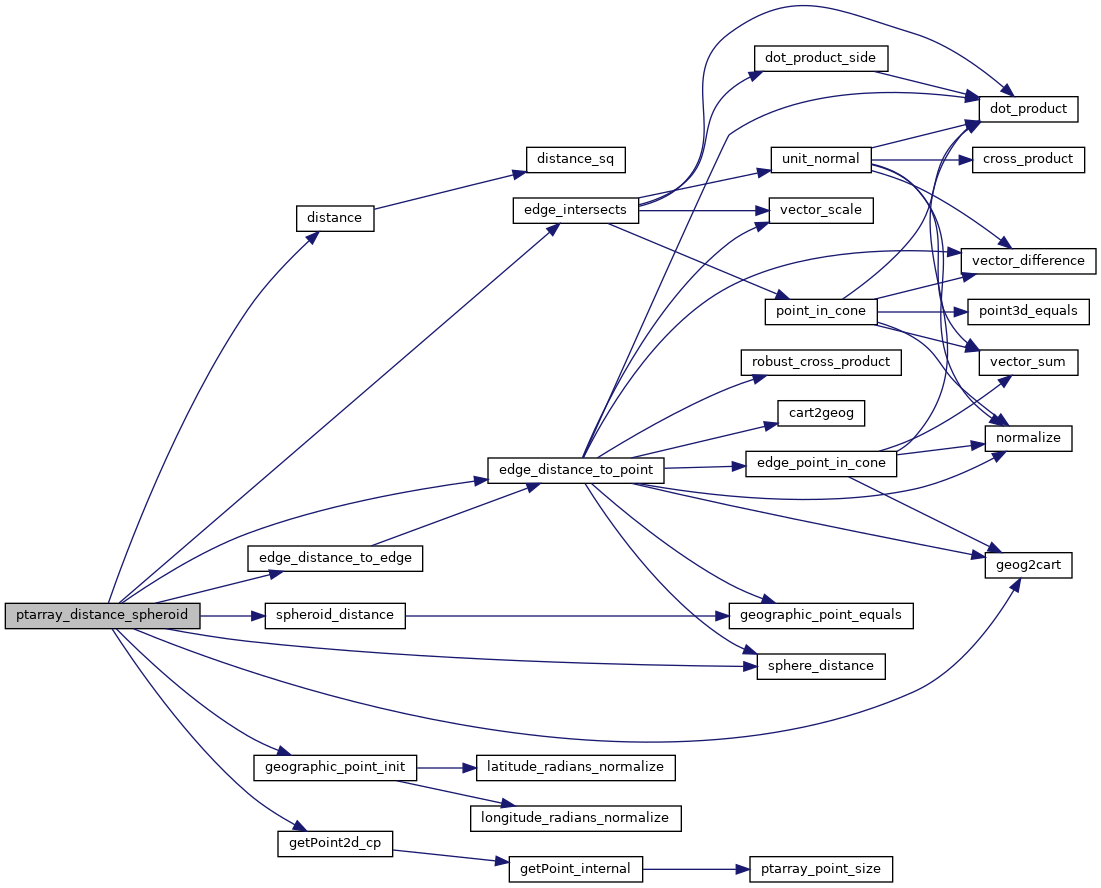◆ ptarray_distance_spheroid()
|
static |
Definition at line 1756 of file lwgeodetic.c.
1847 /* On a spheroid and near the tolerance? Confirm that we are *actually* closer than tolerance */
void geographic_point_init(double lon, double lat, GEOGRAPHIC_POINT *g)
Initialize a geographic point.
Definition: lwgeodetic.c:180
double sphere_distance(const GEOGRAPHIC_POINT *s, const GEOGRAPHIC_POINT *e)
Given two points on a unit sphere, calculate their distance apart in radians.
Definition: lwgeodetic.c:896
uint32_t edge_intersects(const POINT3D *A1, const POINT3D *A2, const POINT3D *B1, const POINT3D *B2)
Returns non-zero if edges A and B interact.
Definition: lwgeodetic.c:3389
double edge_distance_to_point(const GEOGRAPHIC_EDGE *e, const GEOGRAPHIC_POINT *gp, GEOGRAPHIC_POINT *closest)
Definition: lwgeodetic.c:1170
void geog2cart(const GEOGRAPHIC_POINT *g, POINT3D *p)
Convert spherical coordinates to cartesian coordinates on unit sphere.
Definition: lwgeodetic.c:404
double edge_distance_to_edge(const GEOGRAPHIC_EDGE *e1, const GEOGRAPHIC_EDGE *e2, GEOGRAPHIC_POINT *closest1, GEOGRAPHIC_POINT *closest2)
Calculate the distance between two edges.
Definition: lwgeodetic.c:1223
double spheroid_distance(const GEOGRAPHIC_POINT *a, const GEOGRAPHIC_POINT *b, const SPHEROID *spheroid)
Computes the shortest distance along the surface of the spheroid between two points,...
Definition: lwspheroid.c:79
static const POINT2D * getPoint2d_cp(const POINTARRAY *pa, uint32_t n)
Returns a POINT2D pointer into the POINTARRAY serialized_ptlist, suitable for reading from.
Definition: lwinline.h:97
Definition: liblwgeom.h:389
Definition: liblwgeom.h:401
Definition: liblwgeom.h:426
References distance(), edge_distance_to_edge(), edge_distance_to_point(), edge_intersects(), GEOGRAPHIC_EDGE::end, geog2cart(), geographic_point_init(), getPoint2d_cp(), GEOGRAPHIC_POINT::lat, GEOGRAPHIC_POINT::lon, LW_ON_INTERRUPT, LWDEBUG, LWDEBUGF, POINTARRAY::npoints, s, sphere_distance(), spheroid_distance(), GEOGRAPHIC_EDGE::start, POINT2D::x, and POINT2D::y.
Referenced by lwgeom_distance_spheroid().
Here is the call graph for this function:

Here is the caller graph for this function:
